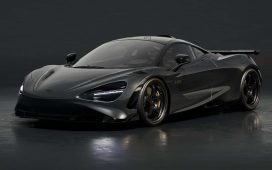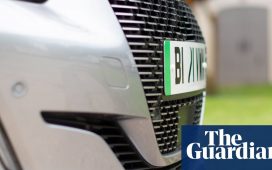The global automotive market is constantly evolving, and 2023 has shown no signs of slowing down. With electric vehicles (EVs) making waves and traditional automakers pivoting to meet new demands, the industry is experiencing substantial trends and growth opportunities.
This year, the global automotive industry is projected to reach new heights, with sales expected to exceed 100 million vehicles. This milestone is driven largely by the rising demand for electric and hybrid vehicles, along with advancements in technology and infrastructure. Major markets such as North America, Europe, and Asia are at the forefront of this transformation, shaping the direction of consumer choices and industry developments.
Honda, one of the major players, reported remarkable success. The company announced a 23 percent increase in their first-quarter profits, thanks to thriving hybrid vehicle sales and favorable currency fluctuations. Their operating profit during the April to June period reached 484.7 billion yen (around $3.3 billion), exceeding market expectations by 12 percent. This growth highlights Honda’s strength in hybrid markets and suggests its strategic agility amid growing competition.
Interestingly, Honda’s success contrasts sharply with its struggles in the Chinese market, where sales plummeted by 23 percent. High competition and the rapid decline of internal combustion engine vehicles have pushed Honda to lay off some operations, including the shutdown of one plant and halting production at another. This pivot indicates the larger trend within the industry: the need to adapt to changing consumer preferences toward electric vehicles.
At the same time, Honda is uniting with fellow competitors, Nissan Motor, to accelerate development of new technologies for electric vehicles and create battery solutions together. This partnership marks a significant shift, as companies traditionally operate independently. By collaborating, automakers can share knowledge and resources to speed up innovation and stay relevant.
The pressure to electrify is not just confined to Japan. Globally, automakers are gearing up for major shifts. According to recent analyses, the worldwide market for electric vehicles is expected to skyrocket, with projections indicating sales could increase by nearly 25 percent annually through 2030. This growth is bolstered by increased government support and investment, as nations worldwide aim to reduce carbon emissions and address climate change.
While there are tremendous opportunities, the challenges are equally notable. Supply chain issues stemming from the pandemic have affected many automakers, with shortages of key components like semiconductors stalling production. The effects of these disruptions linger, impacting manufacturing capabilities and the ability to meet consumer demand.
Another area of concern for automakers is the rising cost of raw materials, particularly for batteries. The prices of lithium, cobalt, and nickel—critical for battery production—have spiked, raising questions about profit margins and sustainability. Automakers are exploring alternative materials and recycling methods to mitigate these costs, but the road to solid solutions will take time.
A glimpse at the competition reveals how significant changes are evolving. Rivals like Tesla continue to dominate the EV space, regularly pushing the envelope with innovation and brand loyalty. Meanwhile, newer players, particularly from China, are emerging on the global stage, offering competitive pricing and advanced features. The competition is becoming fiercer every day, compelling traditional manufacturers to rethink their strategies.
Another significant trend is the growth of connected cars. These vehicles are equipped with internet connectivity, providing real-time data on everything from engine performance to driver behavior. The notion of even integrating artificial intelligence is being explored, potentially enhancing the drive experience and safety features. It’s not just about getting from point A to point B; it’s about how smart, safe, and enjoyable the ride can be.
Then there is the issue of consumer behavior itself. Granting greater emphasis on sustainability, many individuals are aligning their purchasing decisions with environmental consciousness. This trend leads to more inquiries about companies’ eco-friendly practices and transparency around sourcing materials. Clearly, automakers will need to embrace green initiatives not only to appeal to buyers but also to comply with increasing regulations.
The future of the automotive industry doesn’t solely rest on traditional vehicles anymore; the spotlight is firmly placed on hybrids and electrics. With consumers increasingly demanding cleaner options, automakers are hurrying to develop compelling models. Companies like Ford and GM have committed to significant investment to transform their fleets, with plans for new electric models hitting showrooms within the next few years.
The transition to electrification isn’t just about making vehicles; it’s also about reshaping the entire automotive ecosystem. This means investing heavily not just on vehicles, but also on infrastructure, like charging stations. Experts suggest the drive toward charging networks is equally as necessary as producing electric cars themselves. For widespread adoption, accessibility of charging infrastructure is critical.
Even scout vehicles, considered niche markets, are becoming more relevant as companies look for unique ways to attract different customer segments. Luxury brands are increasingly pushing electric models, appealing to younger demographics who prioritize sustainability.
Looking at sales statistics from 2023, electric vehicle purchases have grown substantially, with some experts estimating sales of EVs will surpass those of gasoline-powered vehicles within the next decade. Yet, tackling the lingering stigma surrounding battery life and charging times remains critical for complete acceptance.
The emergence of autonomous driving technology also continues to play its part, with various companies testing advanced driver-assisted systems. The continuous enhancements to safety sensors and decision-making algorithms are gradually shaping our vision of future mobility.
Automakers are turning their attention toward collaborating with technology firms to develop the systems necessary for successfully integrating autonomous features. The rise of autonomous vehicles represents not just new possibilities for travel but also fundamental changes to urban planning and infrastructure needs.
Finally, how will these trends affect employment within the automotive sector? Transitioning to electric vehicles and technologies may necessitate retraining existing staff or hiring new talent with expertise. Upskilling initiatives will become the focus so companies can adapt to changing needs. Meanwhile, the careers of many traditional roles may be altered or even become vacant, wrestling with the wave of electrification and autonomous driving.
Embracing change is the underlying thread tying it all together. Whether it’s through collaboration, embracing technology advancements, or shifting focuses to electrification and sustainability, the global automotive market is poised for transformative change. The next few years will be pivotal as automakers respond to challenges and capitalize on new opportunities.
For consumers, this means more choices, advancements, and options toward cleaner, smarter driving experiences. The dance of innovation will escalate, ensuring the industry is vibrant and forward-moving, like never before. Keep your eyes on what’s happening because the ride is just getting started.










